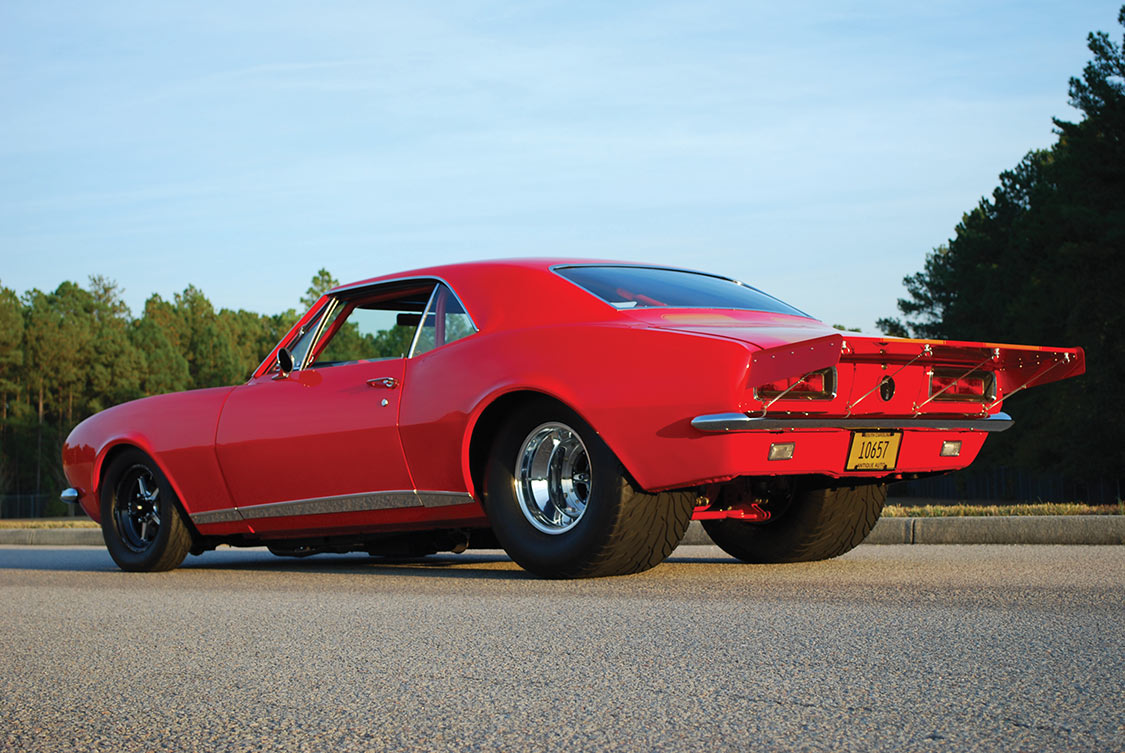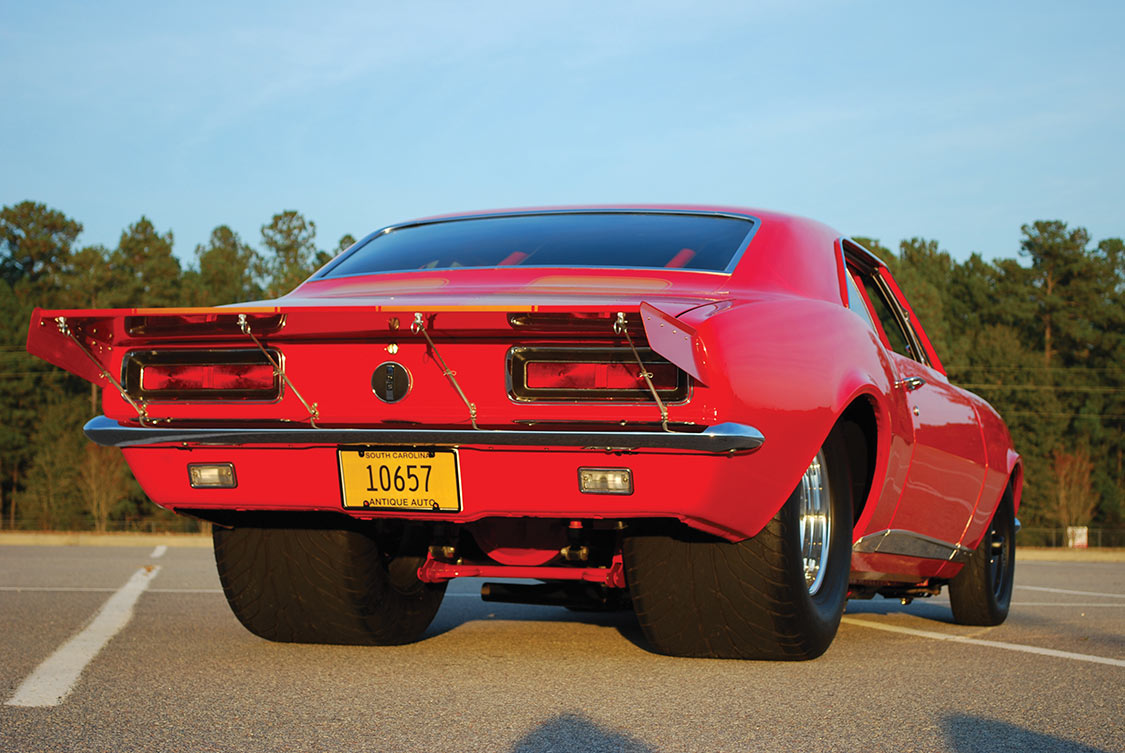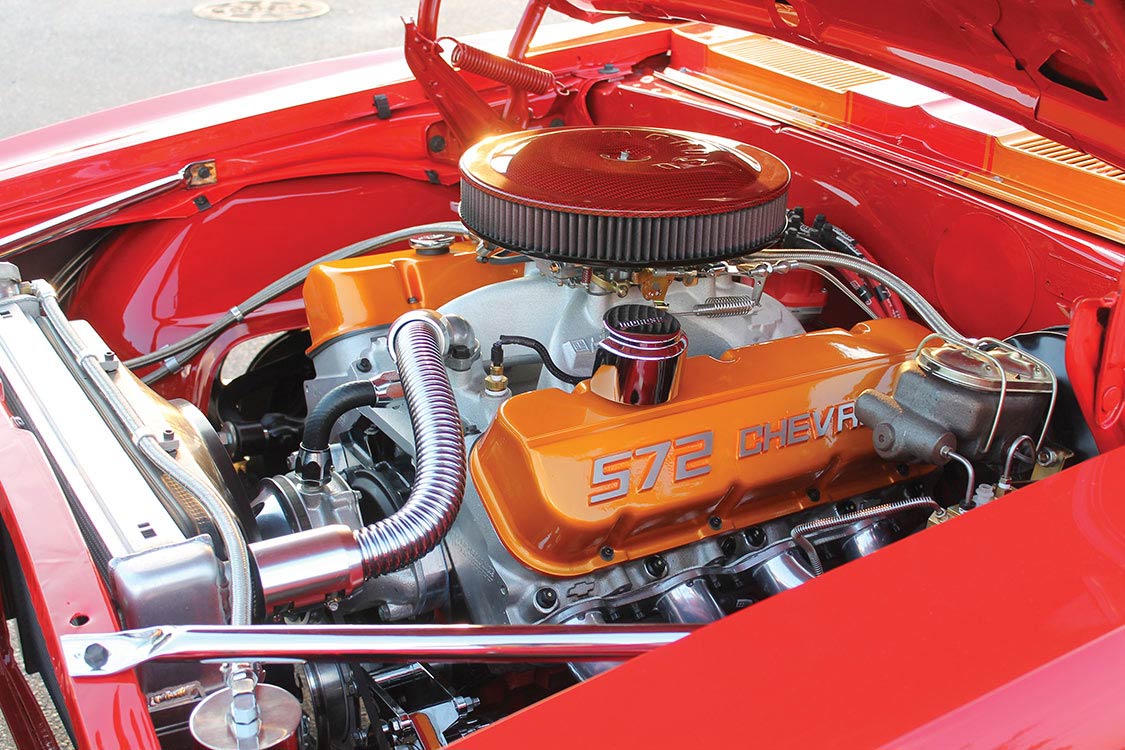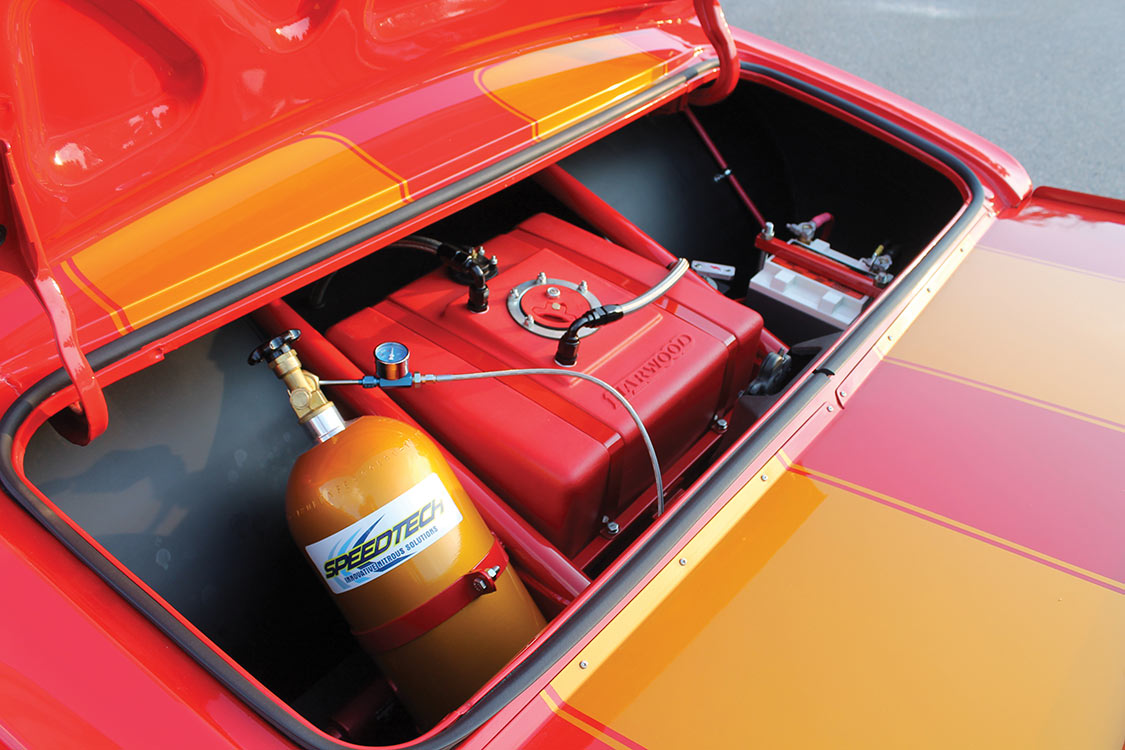In 1978, during his junior year in high school, Mike Norcia bought an 11-year-old Camaro, which has remained in his possession since. Today, the car is rebuilt in the style of a Pro Street machine, or perhaps more accurately a Pro Mod Street. Endowed with a 572-cu.-in. power unit (9.4-liter), GM’s biggest crate engine and rated at 620 bhp/650 tq the car is fast—operating in the high 9-second range over the quarter mile.
Norcia, who with his brother Pat, heads Ram Clutches in Columbia, South Carolina, was born in Canton, Ohio, and a few years ago, began to relish the challenge of shaping the hot rod just the way he wanted it. His affection for race cars and hot rods was awakened at an early age—undoubtedly transmitted by his father, John, who had formed the noted competition clutch company in the early 1970s.
“At the time I bought the car,” says Norcia, “I would have been satisfied with a 1967, 1968 or 1969 model. Although the body of the 1969 Camaro is different, the dissimilarities between my 1967 car and the 1968 model are minor—detected mainly in the grille, the quarter vent windows on the doors and the taillights.”
Investigation into the serial numbers indicated the car was a Rally Sport model. The RS option represented an appearance package that included concealed headlights, revised taillights with backup lights under the rear bumper, RS badging and exterior bright trim.


“For $1200,” Norcia says, “I got a clean body with 34,000 miles of use, a Muncie M22 transmission, a Dana rear end and enlarged rear wheel wells, which indicated that the car had probably seen competition use.
In the engine bay, it sported a nice 327-cu.-in. power unit—split down both sides of the block!” Abandoned in a barn over several winters and with a cooling system filled with water without antifreeze, crankcase destruction was inevitable. “I suspected the only tools the previous owner used to work on this car were a dead-blow hammer and a blow torch!” Norcia says.
The engine was replaced with a fairly radical 350 and the car was pressed into action for another year until one evening when setting the valves, oil issued from the exhaust and up the garage door behind. This was the result of multiple valve-seal failures on one side, following some spirited driving the night before.
The next engine combo was an LT-1 from a 1970 Corvette. “Around this same time,” says Norcia, “and with the help of a friend, we stripped the car and repainted it.
We chose Corvette Dark Red and incorporated Silver Blue flames coming off the front rally stripe. Being a typical 17-year-old, I didn’t do as good a job as I could have with the paintwork. But it certainly was an attention-getter!”

By late 1983, however, Ram had moved its competition clutch business from Canton, Ohio to South Carolina and the car remained idle for over a decade. Norcia devoted most of his energies to the preparation of racing clutches and nitrous systems, working with several Top Sportsman teams in the infancy of Pro Modified racing.
Then out of the blue in 1994, he towed the car to Stroupe Race Cars in Kings Mountain, North Carolnia, for a complete 12-point roll cage and back-half job—rebuilding the car from the firewall to the back end. The intention was to develop it as a Pro Street car.
But at the same time he started a family and, as a consequence, the car languished in the garage for the next 17 years. Then in late 2010, his son began showing an interest in reviving the project.
The body was sent to Color by Weasel in Lugoff, South Carolina, and the car was completely rebuilt to its current condition, incorporating much of what he had learned over the years: “mainly patience!” he bridles.
When recounting the more memorable events of the project, the transmission initially came to mind. With the engine in place and while installing the Tremec TKO 5-speed gearbox, he encountered a peculiar difficulty.
Fortunately, Hurst Driveline had figured out that to install the big-block in the Camaro an offset of around 0.750-in. to the right (the passenger side) was required. As a result, the transmission location is different from that of stock and for this reason a special crossmember is required.


“Transmissions vary and some Pro Street guys even run Lencos,” Norcia says, “but I use a 5-speed Tremec TKO 600, which has an overdrive top gear. It transmits through a Ford 9-ich. rear end with a Strange spool, 4.10 gear and axles. This gearing arrangement generates around 55 mph at 2000 rpm, which suits my street driving.” The Tremec, incidentally, uses its own shifter with a round-style knob by Lokar, who also provided the pedals and pads.
Inside the Quicktime bell housing, which adapts the big-block to the TKO, Norcia, predictably, used a Ram Force 10.5 dual-disc clutch pack with their new hydraulic release bearing and connected the system to an American Powertrain master cylinder.
Perhaps the best news for Tremec enthusiasts is that Ram recently announced information of their hydraulic release bearing development program that adapts Tremec’s range of transmissions to all muscle cars. As the power increases, so too must the capacity of the rear tires to provide additional traction. Transmitting its power to the road is achieved by Billet Specialties Comp 5 wheels and Mickey Thompson 15 x 31.5-18 Sportsman radials (fronts: 15 x 5).
In the engine bay, Dynatec, aware of the necessary engine offset, produced an admirable header package that adapts the big-block to the Camaro. With coated pipes in durable silver, exhaust gases flow into Summit stainless mufflers with side exits.
Speaking of the acclaimed Ohio speed shop, the car also uses a Summit aluminum radiator with a Flex-a-Lite fan and shroud. “I tried several fans,” Norcia says, “but this one is superior to the others. It maintains a reliable 192 degrees Fahrenheit regardless of ambient conditions.”

To increase the spark charge at the plugs, and therefore ignite the air-fuel mixture more completely, an MSD 6AL ignition box was installed in tandem with its electronic distributor and Blaster coil. Wires are by Moroso. More notably, perhaps, is that all the original wiring was replaced with American Autowire’s High- way series.
“It’s a great deal,” Norcia says, “because you can conveniently rewire the entire car; it even accommodates an electric fan. You just terminate the ends and make the connections where you need them.” A 12-volt XS Power battery provides the electrical energy and a one-wire Powermaster alternator maintains its charge.
To feed the thirsty 572 big-block, the excellent Aeromotive A1000 fuel pump was put to good use. Pumping from a modest 12-gal. fuel cell, the pump is assisted by an Aeromotive fuel-pressure regulator and two filters; one placed before the pump, the other before the carburetor. Lubrication for the engine, transmission and rear end is entrusted to Royal Purple.
Common interests get projects going, but it is shared experiences that accumulate the memories—it builds the community—as no doubt Norcia and his pals will confirm. “I have always been a Pro Street and a big-cubic-inch admirer, and on this project we pursued a theme of ‘modern Pro Street’ or, put another way, what would the car look like if it were built to match the style of high-horsepower race cars today? The result is this—what I term Pro Mod Street. Could we be starting a new trend?”
Editor’s Note: A version of this article first appeared in the June 2016 print issue of the Drive Magazine.